
How Sacramento Celebrates the Modern
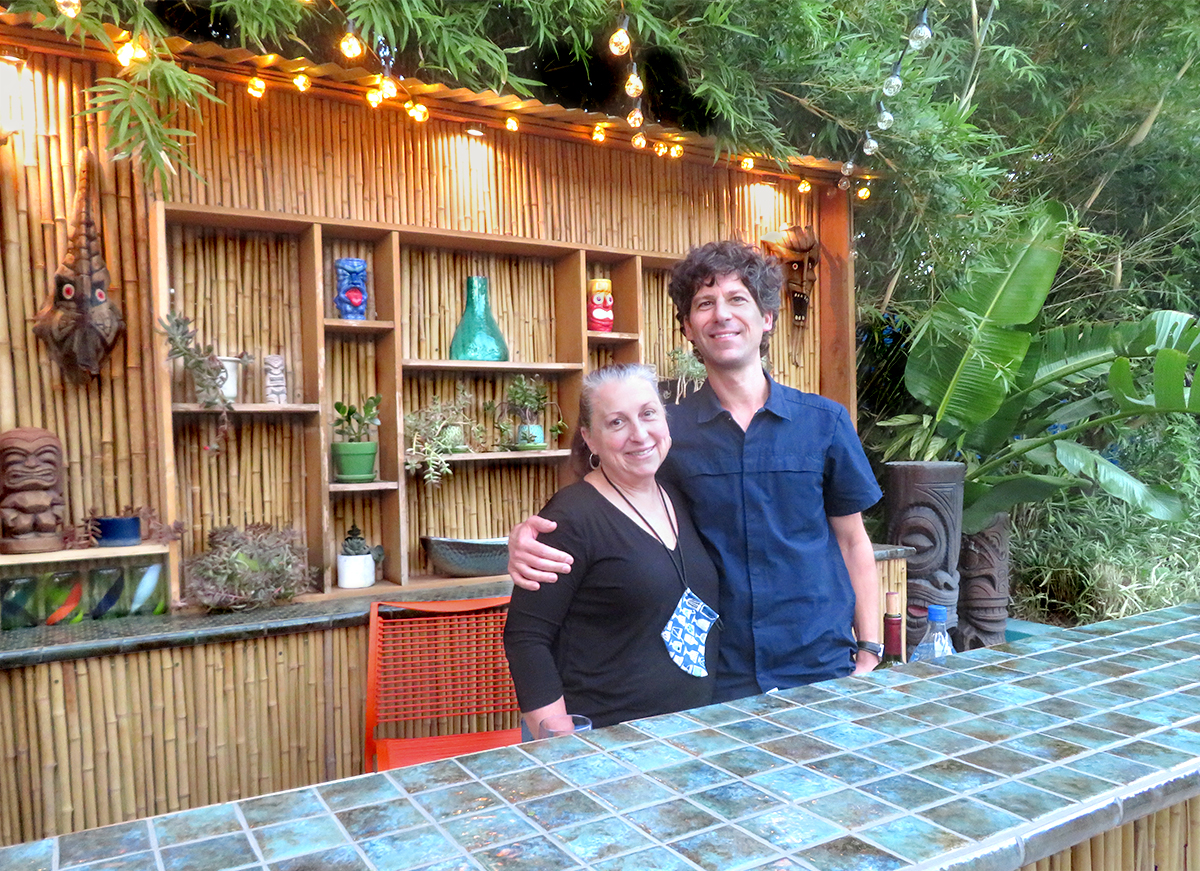 |
Architecturally Sacramento is best loved for its domed capitol and the stately homes that line its tree-canopied streets. But the love affair between Gretchen Steinberg and mid-century modern that began at the start of this century has added to this mix.
From tracts of Eichler and Streng homes to custom homes by Carter Sparks, from a neon sign in the shape of a giant hammer to a Googie shopping center, Gretchen has embraced the city’s rich modern heritage, helping create a community of like-minded enthusiasts that is helping preserve important places.
Steinberg is quick to say she was not the only modern-preservation pioneer in Sacramento, mentioning Eichler owner Dane Henas, and Justin Wood, who created a blog about architect Carter Sparks.
Among local preservationists, she says, "I'm not the first and not the last, but I was the loudest."
She also spent 50 to 60 hours a week organizing the first tour of mid-century modern homes in 2010.
This was one of the earliest events to put modernism in the state’s capitol on the map. Since then the group she founded in 2010 that sponsored the tour, Sacramento Modern, has accomplished much – including inspiring such volunteers as Robert Maurer, Glen Warren, Tyler Wichmann, and Kathy Stricklin, and others.
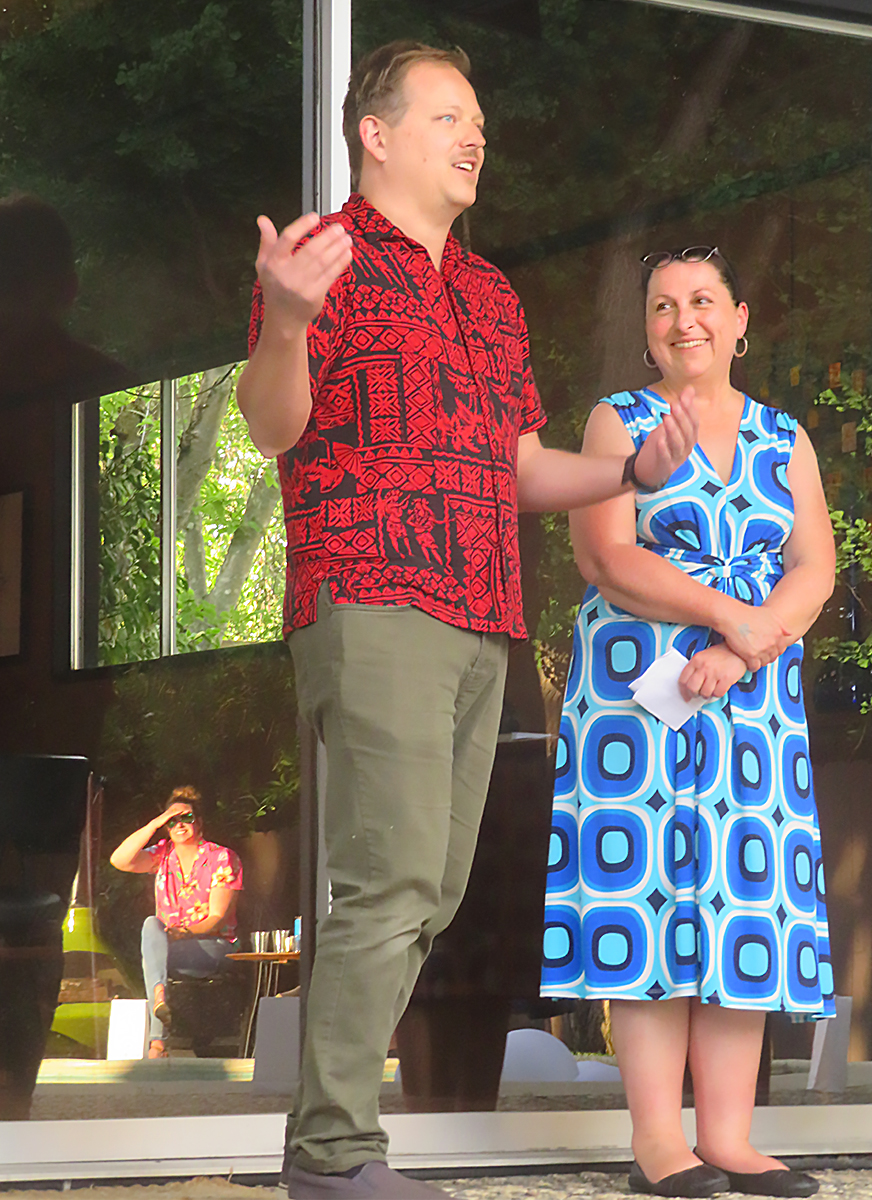 |
Over the years, Wood built a website devoted to Streng homes. Wichmann helps manage a Facebook page devoted to Streng homes. Stricklin celebrates the modern legacy of the city’s Arden Arcade neighborhood online.
On top of that, Gretchen has brought concern for modernism to the city’s longtime preservation group, Preservation Sacramento, which until recently called itself the Sacramento Old City Association. She is a board member. Talks are underway that may lead to an affiliation betwen that group and SacMod.
Sac Mod has had signal successes. Gretchen cites the group’s three home tours which, besides focusing on homes, contained information about commercial and office mid-century modern buildings.
“We’ve raised a lot of awareness and enthusiasm for mid-century modern places in Sacramento,” she says.
SacMod encouraged city officials to create a “context statement” about modernism in the city, an invaluable document of 185 pages that surveys modern places throughout town. The effort involved the architectural historians who wrote the report, the city of Sacramento, survey volunteers, and the state Office of Historic Preservation.
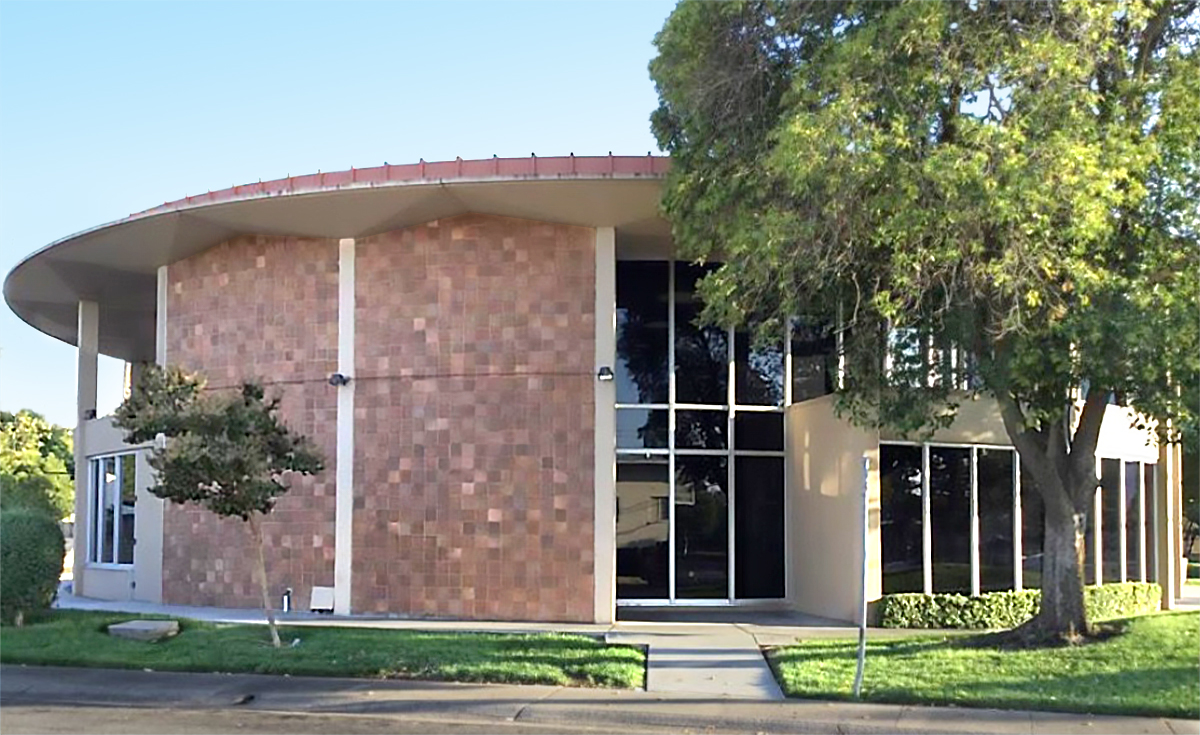 |
Thanks to the report, and following much community work, five modern sites received landmark status, which should help protect them: the Brutalist-style Schaber County Courthouse; Gunther’s Ice Cream shop with its animated neon; the butterfly-roofed Shepard Garden & Arts Center; and a circular-plan Chase bank The city’s only Eichler neighborhood is seeking such status as well.
Just as valuable as these buildings, more so in fact, are the people behind them, those who designed and built them, and those who work hard to save them. Over the years we have written much about architects and builders but less about protectors of our heritage.
In future posts we will meet other preservationists. Steinberg is a good way to kick this investigation off because of her role in Sacramento, and how she has inspired others.
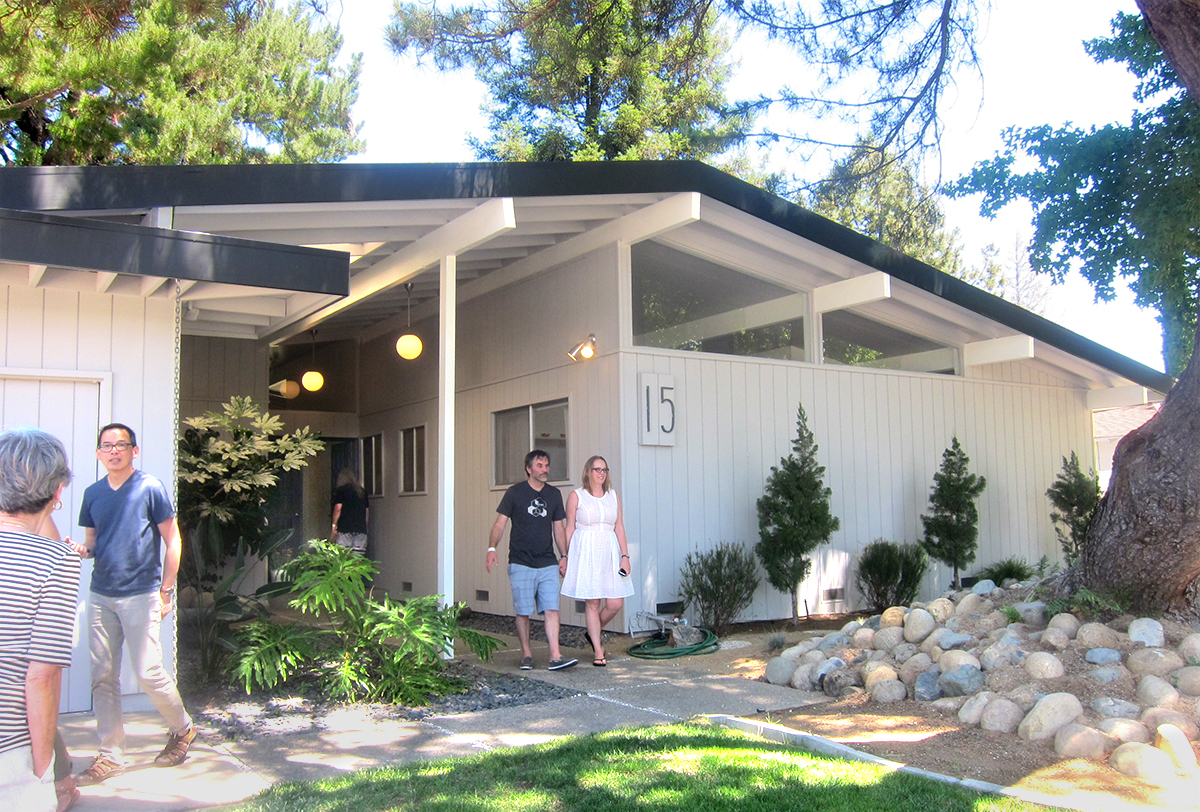 |
Gretchen Van Dusen grew up near Palm Springs, raised by her grandparents and surrounded by mid-century modern before the term was invented. “I had front row seats to what it was like in the late 60s, early 70s,” she says of the desert hot spot.
Her grandfather belonged to the Tamarisk Country Club, which attracted the stars. “At one point I met the whole Rat Pack,” she says, though she was too young to appreciate the honor. “My grandfather brought me over, ‘Here’s Sammy Davis Jr., here’s Dean Martin and so forth.’ ”
At UC Santa Barbara she studied music composition then switched to psychology.
Working for the nonprofit Protection and Advocacy for close to a decade, Gretchen investigated cases of abuse against people with developmental and mental disabilities, often horrifying cases, sometimes involving deaths. Gretchen testified in court at times, and her work helped lead to reforms.
The job brought her to Sacramento, and when she decided to switch careers she got a second bachelor’s degree, this time at UC Davis in design.
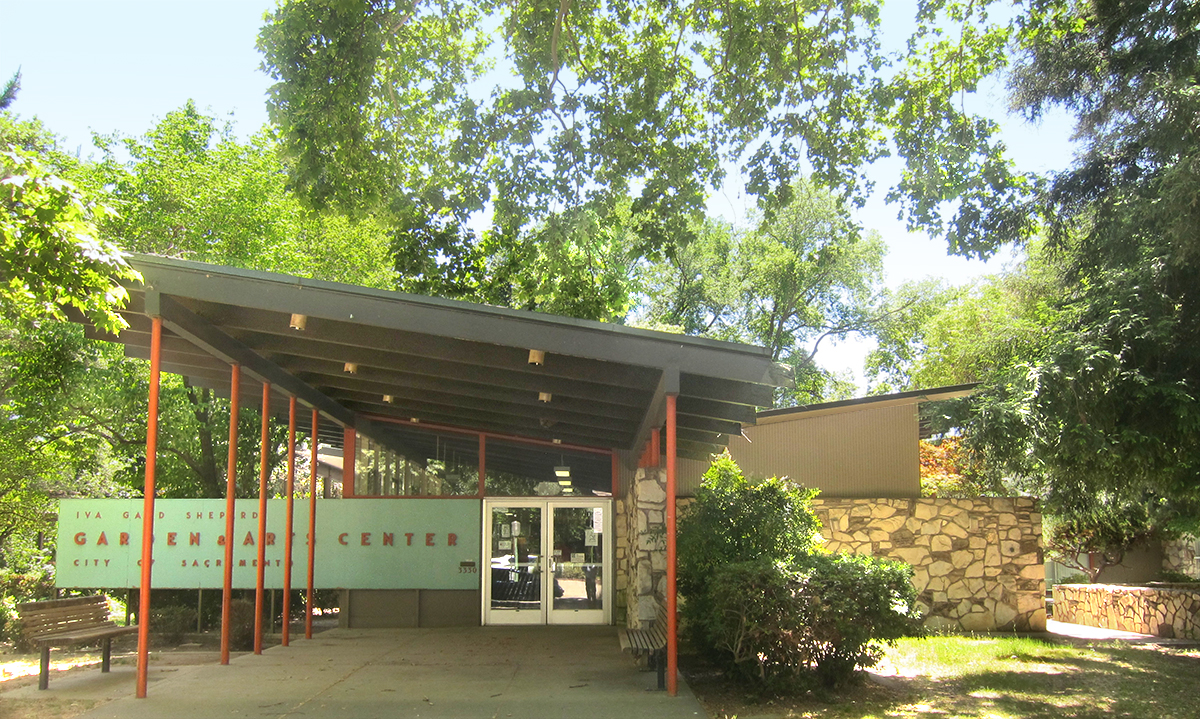 |
“I said, I have had enough dealing with people. I want to work with something fun, like design,” Gretchen says.
In 2000, just as she was leaving UC Davis, she married Alan Steinberg, today a lawyer for Caltrans. “It was my husband who said let’s get a mid-century modern house,” she says. They bought their home in 2000 and seven years later bought an Eichler in the South Land Park tract as an investment.
She soon became part of the Eichler community, meeting Eichler owner Dane Henas online. “Besides Dane, nobody was talking much about the Eichlers,” she says. But Gretchen helped change that by starting a popular blog about Eichlers.
Her interest spread to Googie restaurants, the nearby airport, and all things mid-century modern, fueled by research and her creation of a valuable archive.
“Once we moved here [into her current home], my career life was over and my volunteer work began,” says Gretchen, who has also raised two children during that time.
Today Gretchen is hoping to pass her passion onto new leaders in the preservation movement and to the general public.
“It’s not enough to landmark a building," she reminds us. “They can always (find a way to) tear down landmarks. Its owners’ rights,” she says.
“The best way to save a place is to make sure that people actually love the place and want to see it continue to thrive, and that it matters to them,” she says.
- ‹ previous
- 333 of 677
- next ›



